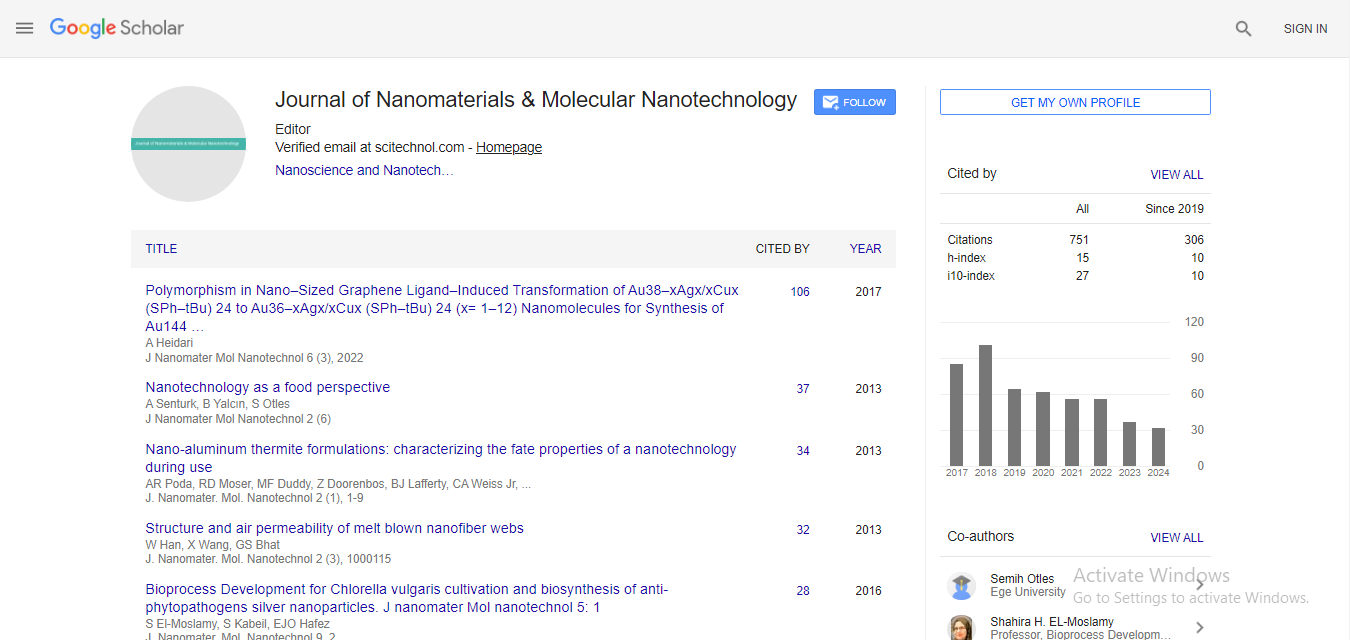Research Article, J Nanomater Mol Nanotechnol S Vol: 0 Issue: 1
Elementary Polarizability of Sc/Fullerene/Graphene Aggregates and Di/Graphene–Cation Interactions
| Francisco Torrens1* and Gloria Castellano2 | |
| 1Institut Universitari de Ciència Molecular, Universitat de València, Edifici d’Instituts de Paterna, P. O. Box 22085, E-46071 València, Spain | |
| 2Facultad de Veterinaria y Ciencias Experimentales, Universidad Católica de Valencia San Vicente Mártir, Guillem de Castro-94, E-46001 València, Spain | |
| Corresponding author : Francisco Torrens Institut Universitari de Ciència Molecular, Universitat de València, Edifici d’Instituts de Paterna, P. O. Box 22085, E-46071 València, Spain Tel: +34 963 544 431; Fax: +34 963 543 274 E-mail: francsico.torrens@uv.es |
|
| Received: June 16, 2013 Accepted: July 29, 2013 Published: August 09, 2013 | |
| Citation: Torrens F, Castellano G (2013) Elementary Polarizability of Sc/Fullerene/Graphene Aggregates and Di/Graphene–Cation Interactions. J Nanomater Mol Nanotechnol S1:001. doi:10.4172/2324-8777.S1-001 |
Abstract
Elementary Polarizability of Sc/Fullerene/Graphene Aggregates and Di/Graphene–Cation Interactions
Interacting induced-dipoles polarization in code POLAR allows molecular polarizability, which is tested with Scn/Cn [fullerene/ graphene (GR)]/Scn@Cm clusters. Polarizability sees clusters of unlike sizes, parting isomers. Bulk limit is estimated from Clausius– Mossotti relation. Clusters are more polarizable than the bulk. Theory yielded this for small Sin/Gen/GanAsm; however, experiment, reversely for larger Sin/GanAsm/GenTem. Smaller clusters need not act like middle: surface dangling bonds cause small-clusters polarizability that resembles metallic. Code AMYR models GR(2)– Mz+. A 24-atom plane models GR. Mz+ is placed on GR top (T)/ bridge (B)/hollow (H). GR–Mz+ stability decays: H>E>T. From H to T, stability drops 75%, 16%, 14%, 35%, 19% and 31% for Li+/Na+/ K+/M+ mean/Ca2+/average. In GR2–Mz+ from H to B to T, stability decays 4%/1%. Drops are smaller than GR–Mz+. Dispersion differs less than GR–Mz+. GR is more aware than GR2 to Mz+, M+/2+ swap and site.
 Spanish
Spanish  Chinese
Chinese  Russian
Russian  German
German  French
French  Japanese
Japanese  Portuguese
Portuguese  Hindi
Hindi 



